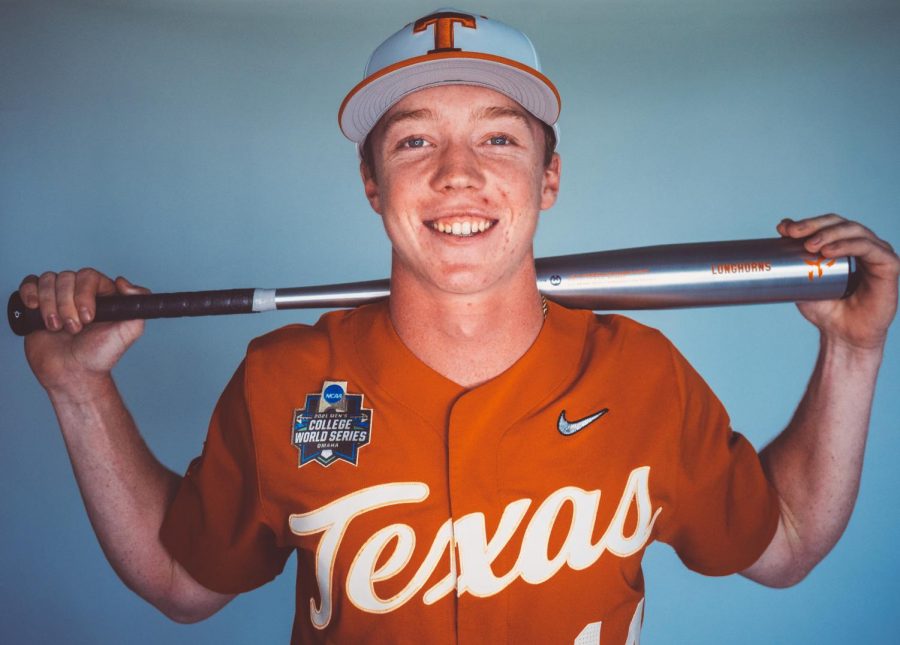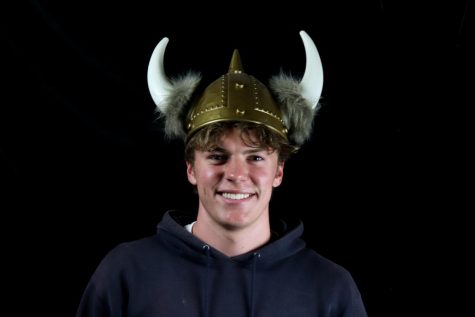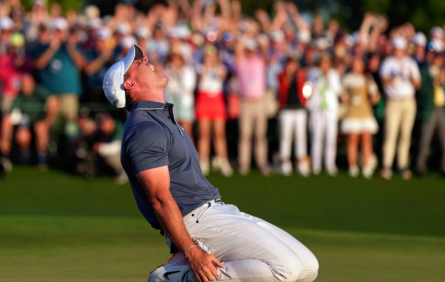The Recruiting Process
December 14, 2021
Recruiting process: a stressful task that every athlete with a desire to at the next level has to go through. Starting at the end of their sophomore year leading into their junior year, prospective student-athletes are in constant communication with college coaches, trying to prove their worth and ability to play at the next level.
Students looking to get recruited need to meet many criteria set by coaches and schools. Coaches look for a variety of characteristics that set students apart from others, such as athletic ability, academics, and character. They have to ensure that the student not only would be able to help make a difference in the team’s performance, but is someone who will fit in well with the team culture as well.
The timeline for possible recruits varies from student to student, with a few students verbally committing as early as eighth grade. Typically, freshmen who want to get recruited research different division levels of interest as well as NCAA recruiting rules. Sophomores focus on building an athletic resume, creating highlight videos, and creating relationships with coaches. Most of the junior year is used to create a list of target schools and contact coaches within that list. Offers to join the team are usually made during a student’s junior year through fall of their senior year. Once an athlete makes a commitment to a college, they continue to stay in touch with the coach and they work through the college application process together, usually with early acceptance into a college.
Some of Paly’s finest athletes have gone through the rigorous recruitment process. Paly athletes have shown such immense talent to be recognised by some of the top coaches and schools. These students have been given the opportunity to continue their athletic career into college.
COVID EFFECTS ON THE RECRUITING PROCESS
Last year, the already challenging process was further compounded by the global pandemic. For most student athletes at Paly, practices as well as competitions were all cancelled — which completely changed how the recruitment process worked.
In addition to practices and competitions being cancelled, the NCAA dead period was continuously extended without an end in sight, making it extremely hard for athletes to display their talents to college coaches. During the NCAA dead period, coaches are not allowed to have any face to face contact with prospective student athletes. They are also not allowed to watch them compete in person or travel to their high schools.
This caused both athletes and college programs to get creative in the ways to get around the complicated rules of the dead period. For many athletes, social media became the best option to get themselves out there. The use of Twitter within the recruiting process became huge in certain sports, allowing athletes to share videos of them in their sport to college coaches who may follow them.
Specifically in the world of baseball, Twitter exploded as a main option for athletes to display their talents to coaches during the dead period. Both players and club coaches were posting to their accounts in order to gain as much exposure as possible.
Social media can be an extremely useful tool to increase student athletes’ exposure to coaches, and can be the deciding factor that can make or break your opportunity to get recruited. Because of COVID, students and coaches have utilized digital forms of recruiting. This means students have yet another resource to contact coaches with — but this new opportunity comes with a caution. Because coaches are so invested in social media, Twitter in particular , they make sure to monitor student-athlete tweets. It is important to be careful when posting and liking as any negative social media action can harm your chances of getting recruited.
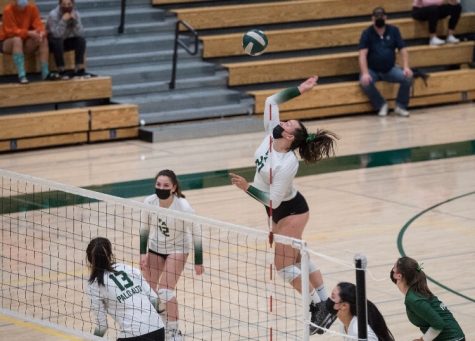
THEA ENACHE
There have been many other Paly athletes that have had their recruitment process affected by the COVID-19 pandemic. Senior Thea Enache, a varsity volleyball player of three years, has had her recruiting process drastically change due to the pandemic.
In a normal year, Enache would’ve had the opportunity to go visit numerous campuses on official visits to see what she likes or dislikes about a school. However, with the NCAA dead period set in place and travel heavily limited, she had to do her visits digitally, which were nowhere near as beneficial.
“I took official visits that were on Zoom,” Enache said. “People basically just pointed their cameras at buildings, so it’s definitely a different experience.”
As a multisport athlete, Enache fully dedicated herself to volleyball at the start of her sophomore year. By attending multiple volleyball clinics her sophomore year, she quickly drew the attention of college scouts. She had multiple elite schools watch her play at tournaments. However, after COVID, everything had changed.
“COVID made me nervous and it made other coaches nervous as they started committing people right away,” Enache said.
As someone who was not ready to commit to a college right away, she felt that she lost many opportunities because of the pandemic as coaches often expected an answer from her right away.
“Talking to coaches and having them say that I have to make a decision quickly that I wasn’t ready to make was the most difficult part,” Enache said.
Enache held true to her values, and didn’t want to commit right away to a college when she hasn’t had the opportunity to visit and see what the team dynamic is like. Because of this, she ended up having to restart her recruiting process again during the pandemic and is still working through the process right now.
“It made me question my moral fundamentals,” Enache said.
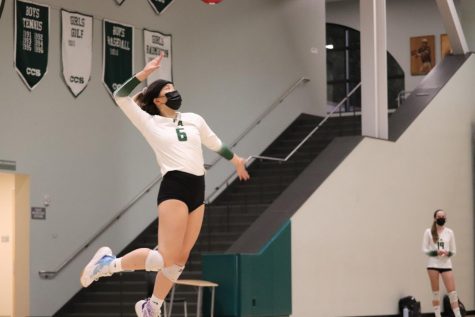
HILLARY CHEUNG
But Enache is not the only Paly athlete that had their recruiting process affected by COVID. Senior Hillary Cheung, a Paly volleyball player of four years and teammate of Enache committed to the University of Chicago, a school with a Division III volleyball team. Her experience has been greatly changed by the effects of the COVID-19 Pandemic.
Cheung was first noticed by coaches when she was in eighth grade, and from then on she had been reaching out to schools that she was interested in, looking for the opportunity to take her game to the next level.
“I started around freshman year when I started emailing coaches, and there wasn’t a lot going on for freshman and sophomore year,” Cheung said. “Junior year is when things started to pick up and I got to contact coaches more.”
Similar to Enache, Cheungs recruitment process was drastically altered by COVID and the mandatory lockdown procedures spanning across the nation. Because of the traveling restrictions in place, it was hard for Cheung to contact coaches or meet them in person.
“Coaches couldn’t come to watch you play live, which is usually a deciding factor for them, so they could only see highlight videos or any video that you send to them, which is biased,” Cheung said.
Cheung committed to the University of Chicago in the summer between Junior and Senior year, right after she had visited Pomona, Williams, and UChicago.
“I was very excited to have this next step for me academically, just career wise,” Cheung said. “I guess I’m still a little bit stressed because there’s a fear that maybe I won’t get in.”
Cheung felt like the hardest part of the recruitment process came from the coaches. Because of COVID it was very difficult for coaches to assess your skills in the sport without being able to see you play in person. Coaches were also hesitant to commit players because they did not have a full understanding of the players ability.
“I definitely think a lot of coaches will kind of lead you on a little bit, and then it gives you a lot of hope,” Cheung said. “But then ultimately, it often falls through.”
Social media has been helpful for athletes like Cheung to still “visit” a college virtually. Because Cheung could not visit the college in person, online alternatives helped her choose the school that was right for her.
“Sometimes [the college] will do posts about new gyms or introducing each player,” Cheung said. “I also think about following people’s private accounts and getting to know them better and being able to DM them if I have any questions.”
During the recruitment process it is crucial to keep in touch with coaches, as they are the ones who choose who they put on their roster. Cheung has been keeping in touch with coaches, texting a few times a month with updates academically such as transcripts or progress reports.
“With the coaches, I think it’s been okay,” Cheung said. “We’ve been texting and we’ve only met one time in person, but I think there’s been good online communication.”
The last few years have had a great impact on the overall recruitment process, the main reason being COVID. Because of COVID most of the procedure has moved virtually, using many different online platforms to be seen by coaches.
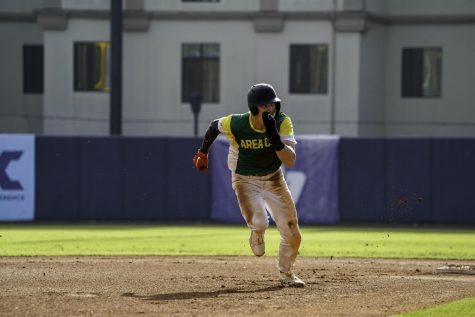
HENRY BOLTE
My recruiting process began in the summer before my junior year, which is a completely normal time as it is common for some people to get a little anxious when seeing younger and younger kids commit around them.
For the entire time that I was being recruited, the NCAA dead period was in effect — making it extremely challenging for me to get exposure directly to college coaches. Fortunately, I was a part of a club baseball team that has great connections with college coaches from being in the world of baseball for over 30 years. This was a crucial part to me being recruited and I would not be in the same situation I am now without that program.
With the dead period preventing coaches from seeing me in person, the only way for me to display my skills to these colleges was through my summer team.
Most of getting a player known to colleges was done through word of mouth and posting to Twitter by respected club coaches. Because my coach had such a great rapport with these colleges, they respected and trusted what he was telling them about his players. Many different college coaches follow his account on Twitter and were able to see me play in some capacity from the videos my coach posted.
The summer following my sophomore year was huge for my recruitment since almost my entire season was cancelled. I had to do something to make up for the time lost on the field, so I went to as many games and tournaments as possible in order to get better and gain exposure.
As I played throughout the summer, I discussed with my travel coach what colleges I wanted to go to and what options were realistic for me. This is an important consideration when getting recruited because you don’t want to focus on schools that may be out of your reach or beneath your level. I put together a list of about ten to fifteen schools and my coach started connecting with those schools, asking what they were looking for, and sending them my film.
As the summer season came to an end, I started my contact with certain schools as they were able to contact me directly on September first of my junior year. As that date was approaching, I didn’t quite know what to expect. I was a little bit nervous but also excited for the process to start picking up a little bit.
Talking to college coaches, whether it be on the phone or in person, can feel overwhelming as it could have a large impact on your future. Trying not to overthink what you say or what you send will help in finding the right fit for you and making the process feel less stressful.
It is important to keep in mind that every coach and school handles their recruiting differently. This was first apparent to me at 12:01 a.m. on September 1st, when I received a text message from a college coach. I originally thought that someone was messing with me, but it was their way of showing interest at the earliest stage possible.
Most of the earlier talks consisted of coaches trying to get to know me and telling me about their program. Just like how every school is different in the way that they recruit players, they are also different in the way they operate as a program. So it is important to make sure that it all aligns with what you are looking for in a school and program.
Something to keep in mind when you are beginning talking to a school is that they are very busy and recruiting other people at the same time. This means they are not likely to be texting or calling every day. Unfortunately, it might not be a fit and you may lose contact with certain schools. But both of those things do not mean that your chances of playing in college are over.
The first time that I talked to a school was a couple of weeks before that date and I did not know what to expect at all. Like any other athlete who has had dreams of playing at the next level, I was pretty nervous about talking to these coaches and wanting to say the right things. But as the process goes, simply being yourself and asking questions that are important to your decision making will help you and the college feel confident in whatever the outcome is.
Since I would not be able to see any of the college coaches I was talking to in person, it was extremely important for me to keep in touch with them. I thought this was something that was critical not only to get them a video or anything they wanted, but also to keep me on their mind and not get pushed to the side. My way of doing this was sending a video of me hitting every week or so just to continue my contact with schools I really wanted to play for.
After going through the process of finding schools I was interested in, gauging their interest, and beginning conversations with those coaches, it came time to make a decision. This for me was an easier one as I was fortunate enough to have my number one choice be an option for me. But this was only possible for me because of the work that was put in but also the way the recruiting process went for me. Without the help of many different coaches, remaining calm when things don’t exactly go your way within the process, and most importantly trusting the process, I wouldn’t be in the situation that I am in. It is crucial to remember those things during your own recruiting process as it can feel like a lot is being thrown at you but just believing that it will work out well will help you get through it.



